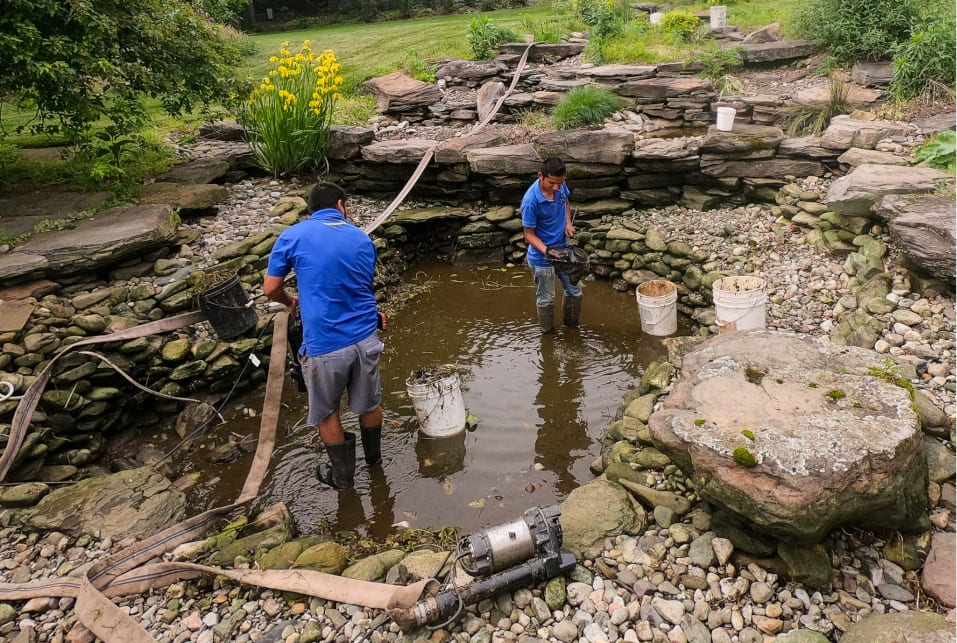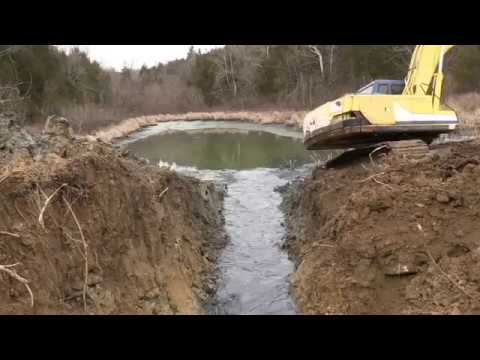Step 1: Assess the Pond’s Condition
Before diving into the cleaning process, take some time to assess the current state of your pond. Observe the water clarity, the condition of the plants, and the overall cleanliness of the pond. This initial assessment will help you determine the extent of cleaning required and identify any potential issues that need to be addressed.
Credit: amencornerponds.com
Step 2: Remove Debris and Unwanted Vegetation
Start the cleaning process by removing any debris, such as leaves, twigs, and other organic matter that may have accumulated on the surface of the water or at the bottom of the pond. Use a skimmer net to scoop out floating debris, and a pond vacuum or a rake to remove debris from the bottom. Additionally, carefully trim and remove any overgrown or unwanted aquatic plants to maintain a balanced ecosystem within the pond.Step 3: Drain the Pond
Once the surface debris and unwanted vegetation have been removed, it’s time to drain the pond. Use a submersible pump to gradually drain the water, being mindful of any fish or other aquatic inhabitants that may need to be temporarily relocated. As the water level decreases, take the opportunity to inspect the pond liner for any signs of damage or wear that may need to be addressed.Step 4: Clean the Pond Liner and Surfaces
With the pond drained, thoroughly clean the pond liner and surfaces to remove algae, sediment, and any built-up debris. A gentle scrubbing with a soft brush and a solution of water and mild pond-safe cleaner can help lift stubborn deposits without damaging the liner. Be sure to rinse the liner and surfaces thoroughly to remove any residue from the cleaning solution.Step 5: Inspect and Maintain Filtration Systems
As part of the cleaning process, it’s important to inspect and maintain the pond’s filtration systems. Check the filter media for any clogs or debris buildup, and clean or replace it as needed. Additionally, ensure that the pump and any other mechanical components are in good working condition to support the circulation and aeration of the water.Step 6: Reintroduce Water and Condition the Pond
Once the pond liner and filtration systems are clean and in good condition, it’s time to reintroduce water into the pond. Fill the pond with fresh water, and add a dechlorinator to neutralize any chlorine or chloramine present in the tap water. This step is crucial to ensure that the newly added water is safe for fish and other aquatic life.Step 7: Reintroduce Aquatic Plants and Fish
After the pond has been refilled and conditioned, carefully reintroduce any aquatic plants and fish that were temporarily relocated during the cleaning process. Take care to acclimate the fish to the water temperature to minimize stress, and monitor their behavior to ensure they are adapting well to the clean environment.Step 8: Perform Regular Maintenance
With the pond now clean and rejuvenated, it’s important to establish a routine maintenance schedule to keep it in optimal condition. Regular tasks such as skimming debris, pruning plants, and monitoring water quality parameters will help prevent the accumulation of organic matter and maintain a healthy balance within the pond ecosystem.Tips for Maintaining a Clean Pond
In addition to the step-by-step cleaning process, here are some additional tips for maintaining a clean and vibrant pond:- Install a pond skimmer and filter system to help remove debris and maintain water clarity.
- Consider adding beneficial bacteria to the pond to help break down organic waste and reduce the accumulation of algae.
- Monitor water quality parameters such as pH, ammonia, and nitrate levels to ensure a healthy aquatic environment.
- Avoid overfeeding fish, as uneaten food can contribute to water quality issues and excessive nutrient buildup.
- Regularly inspect and maintain the pond pump, UV clarifier, and other mechanical components to ensure proper function.

Credit: splashsupplyco.com




